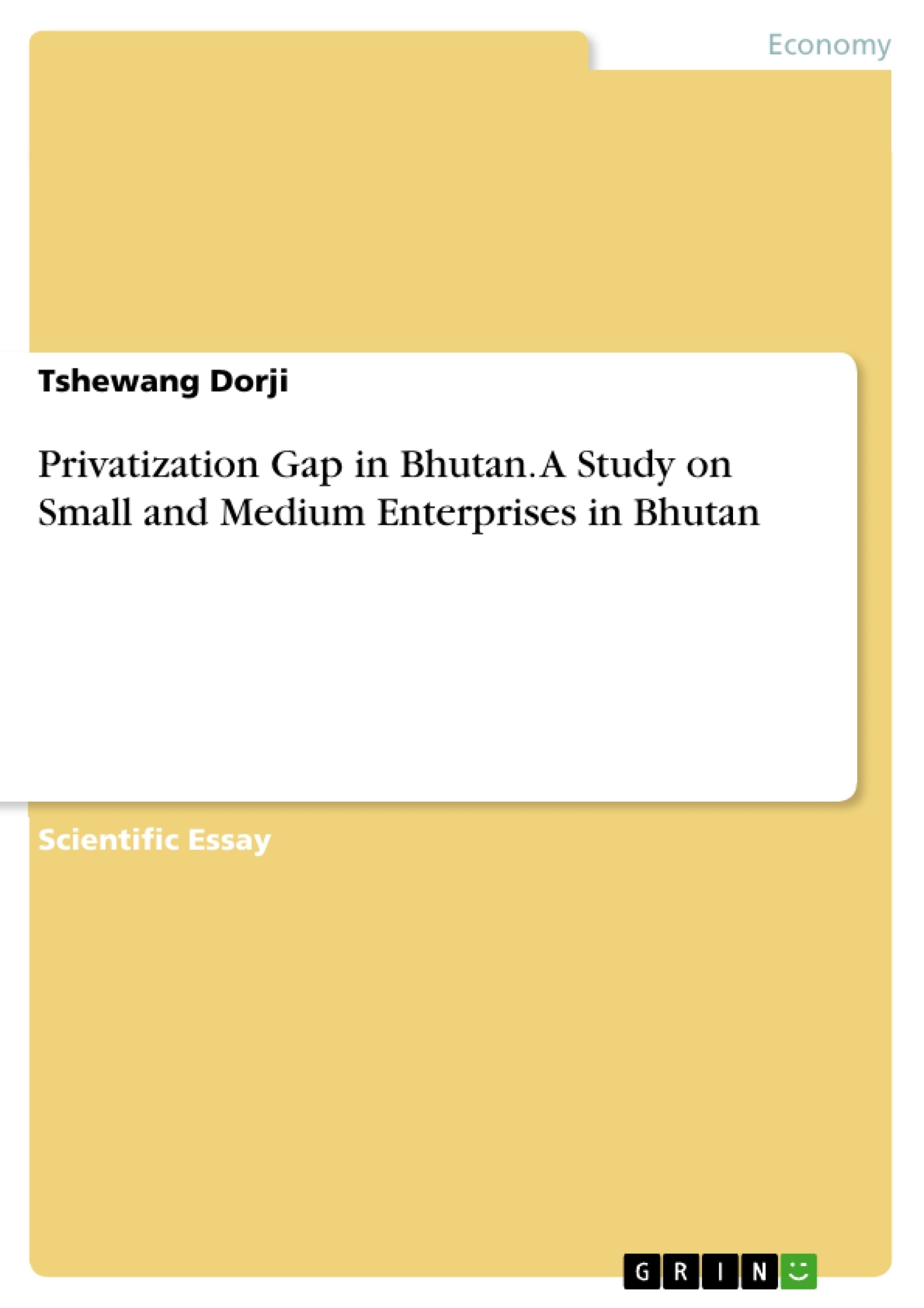This paper provides a comprehensive review of factors affecting the growth and development of SMEs in Bhutan. As far as possible regional literatures have been referred to analyze the challenges Bhutanese SMEs currently face. It is hoped that some suggestions made during the analysis of each of the factors/key challenges become useful indicators and guidelines for the government, and other relevant stakeholders and SMEs themselves to enhance growth of Bhutanese SMEs. It is hoped that case studies on successful SMEs entrepreneurs in Bhutan are studied to take as role models for entrepreneurial development in Bhutan. The ultimate success and effectiveness of the national SME program in turning the Bhutanese transition economy into one of the vibrant one in the region will depend on the level of commitment and the degree of co-operation between all these organizations including the SME itself.
The methodology used for this paper to collect holistic information of the SME in the Bhutan is through publications and papers. All the information in this paper is secondary statistical data from publications of different government agencies as well as international organizations. In addition, research papers on SMEs in the neighboring countries were referred to.
Inhaltsverzeichnis (Table of Contents)
- BACKGROUND AND INTRODUCTION
- Literature Review
- Key Issues and Challenges for SMEs in Bhutan
- CONCLUSION AND RECOMMENDATION
Zielsetzung und Themenschwerpunkte (Objectives and Key Themes)
This paper aims to provide a comprehensive review of the factors affecting the growth and development of SMEs in Bhutan, drawing on regional literature to analyze the challenges Bhutanese SMEs currently face. The paper hopes to provide useful indicators and guidelines for the government, other relevant stakeholders, and SMEs themselves to enhance the growth of Bhutanese SMEs.
- The importance of SMEs in the Bhutanese economy and their role in poverty alleviation and job creation.
- The challenges faced by SMEs in Bhutan, including access to finance, skilled labor, and market information.
- The government's initiatives to foster the development of SMEs through policy and support packages.
- The need for stronger networking and collaboration between stakeholders to enhance the competitiveness of SMEs.
Zusammenfassung der Kapitel (Chapter Summaries)
The first chapter provides a general overview of the importance of SMEs in Bhutan's economy, outlining their dominant role in the country's economic development and their contribution to poverty alleviation and job creation. The chapter highlights the challenges faced by SMEs in Bhutan, including high production costs, low quality of products, lack of innovation, and limited access to finance, skilled labor, and market information. The chapter also describes the government's efforts to support the growth of SMEs through policy initiatives and development programs.
The second chapter delves deeper into the key issues and challenges faced by SMEs in Bhutan. It examines specific challenges such as access to finance, hiring of foreign workers, transport infrastructure, and low skills among workers, drawing on data from the Enterprise Survey of 2011. It also discusses the need for stronger networking and collaboration between stakeholders to enhance the competitiveness of SMEs. This chapter highlights the crucial role of SMEs in driving economic growth, generating employment, and fostering balanced regional development, and emphasizes the need for a comprehensive approach to address the challenges they face.
Schlüsselwörter (Keywords)
Small and Medium Enterprises (SMEs), Bhutanese economy, poverty alleviation, employment generation, access to finance, skilled labor, market information, government initiatives, stakeholder collaboration, competitiveness.
- Quote paper
- Tshewang Dorji (Author), 2017, Privatization Gap in Bhutan. A Study on Small and Medium Enterprises in Bhutan, Munich, GRIN Verlag, https://www.grin.com/document/355491



